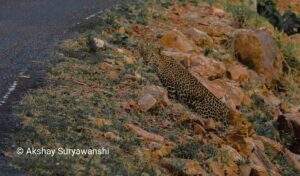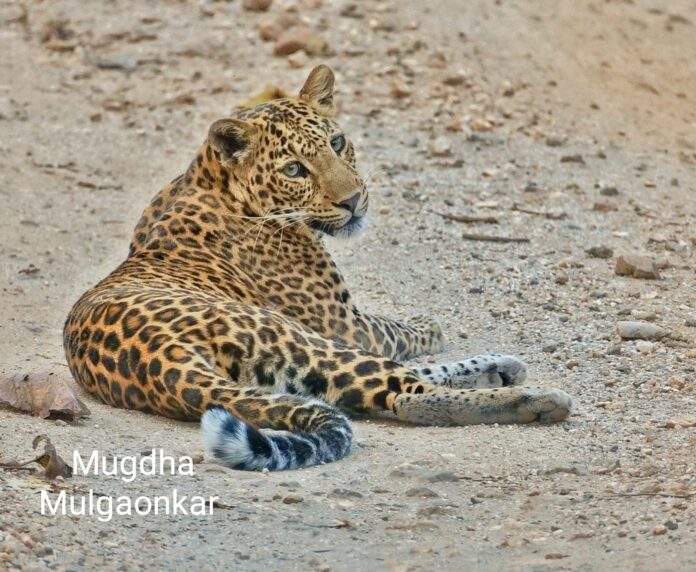
In the rugged landscapes of India, a silent sentinel roams—the Indian leopard, an emblem of grace and resilience amidst the country’s diverse ecosystems. Let’s embark on a journey to unravel the mysteries surrounding this majestic feline.
An Iconic Species:
The Indian leopard (Panthera pardus fusca) stands as a symbol of India’s rich biodiversity. Adorned with a coat of golden fur marked by distinctive rosettes, these solitary hunters blend seamlessly into their surroundings, mastering the art of camouflage in the dense forests, arid scrublands, and even urban environments they inhabit.
Habitat and Range:
From the towering peaks of the Himalayas to the dense rainforests of the Western Ghats, Indian leopards exhibit remarkable adaptability, occupying a wide range of habitats. They are found in national parks, wildlife sanctuaries, and even in close proximity to human settlements, navigating a landscape shaped by centuries of coexistence between humans and wildlife.
Behavior and Ecology:
Indian leopards are predominantly nocturnal, relying on stealth and ambush tactics to hunt their prey, which includes a diverse array of species such as deer, monkeys, and small mammals. Despite their solitary nature, they are occasionally observed sharing kills or interacting with other leopards, especially during the breeding season.

Human-Wildlife Conflict:
As human populations expand and encroach upon natural habitats, conflicts between humans and leopards have become increasingly common. Livestock depredation and occasional attacks on humans result in retaliatory killings and exacerbate tensions between local communities and wildlife authorities. Mitigating these conflicts requires innovative approaches that balance the needs of both humans and leopards.
Conservation Challenges:
The conservation status of Indian leopards is a subject of concern. Habitat loss, fragmentation, and poaching for the illegal wildlife trade threaten their survival. Climate change further compounds these challenges, altering habitat suitability and exacerbating human-wildlife conflicts. Efforts to protect leopard populations necessitate collaborative initiatives involving government agencies, conservation organizations, and local communities.
Cultural Significance:
Leopards hold a revered place in Indian culture and mythology. Depictions of leopards adorn ancient temples, and they feature prominently in folklore and traditional art forms. In some regions, leopards are worshipped as manifestations of Hindu goddesses or
revered as protectors of villages.
Looking Ahead:
As guardians of India’s natural heritage, it is our collective responsibility to ensure the survival of the Indian leopard for future generations. Conservation efforts must prioritize habitat conservation, community engagement, and sustainable development practices. By fostering coexistence between humans and leopards, we can preserve the intrinsic beauty and ecological significance of these magnificent creatures, securing their rightful place in India’s diverse tapestry of life.
Decoding the Scientific Marvel of the Leopard
The leopard, scientifically known as Panthera pardus, stands as a testament to the wonders of evolutionary adaptation and ecological resilience. Let’s embark on a scientific exploration of this iconic feline species, delving into its taxonomy, morphology, behavior, and conservation status.
Taxonomy and Classification:
The leopard belongs to the family Felidae and the genus Panthera, which also includes lions, tigers, and jaguars. Within the genus Panthera, it is classified under the species Panthera pardus, with several recognized subspecies distributed across its vast range in Africa and Asia.
Morphological Adaptations:
The leopard’s physical attributes are finely tuned for its predatory lifestyle. Its sleek, muscular body, supported by powerful limbs and retractable claws, enables stealthy movement and precise maneuverability. The distinctive coat of the leopard, adorned with rosettes and spots, serves as effective camouflage in a variety of habitats, aiding in ambush hunting and avoiding detection by prey.
Behavioral Ecology:
Leopards are solitary and elusive carnivores, primarily active during the night. They are opportunistic hunters, preying on a wide range of animals, including ungulates, small mammals, birds, and reptiles.
Their hunting strategy often involves stalking and ambushing prey from concealed positions, utilizing their exceptional speed and agility
to deliver swift and lethal attacks.
Range and Habitat:
Leopards exhibit remarkable adaptability, inhabiting diverse ecosystems ranging from dense forests and grasslands to semi-arid deserts. They are found across sub-Saharan Africa, as well as parts of the Middle East and Asia, occupying a range of habitats from sea level to high altitudes in the Himalayas.
Conservation Status:
Despite their adaptability, leopards face significant conservation challenges. Habitat loss, fragmentation, poaching for the illegal wildlife trade, and human-wildlife conflict threaten their populations across their range. The International Union for Conservation of Nature (IUCN) classifies the leopard as “Vulnerable,” highlighting the urgent need for concerted conservation efforts to mitigate these threats and secure their long-term survival.
Research and Conservation Initiatives:
Scientific research plays a crucial role in understanding leopard ecology, behavior, and population dynamics. Conservation initiatives
focused on habitat protection, anti-poaching measures, community engagement, and mitigating human-leopard conflicts are essential for safeguarding leopard populations and their ecosystems.
Conclusion:
The leopard, Panthera pardus, epitomizes the ingenuity of nature’s design and the interconnectedness of species within complex ecosystems. Through scientific inquiry and dedicated conservation efforts, we can ensure the continued existence of this magnificent predator, preserving its rightful place in the tapestry of life on Earth.

Sunny Thatte
Conservation Officer
Tiger Research and Conservation Trust






